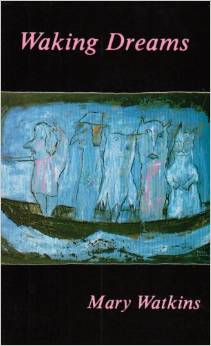Dreaming is continuous and independent of REM phases
It would seem that the dreaming activity of the unconscious continues throughout the night (Foulkes, 1962) and day (Jung, CW. 16, par. 125; Foulkes & Vogel, 1965; Foulkes & Fleisher, 1975; Foulkes, 1985, pp. 71-77; Mavromatis, 1987, pp. 270-272). During the day, awareness pays attention to consciousness and all of its activities. When asleep, though, consciousness is shut down for a rest and we become aware of the dreaming activity of our unconscious mind. Hallucinations and visions occurring during the day (occurring in "normal" people as well as in various forms of mental illness) also supply evidence that the unconscious continues its activity during periods of wakefulness. Based on the extensive research that he has made, Solms (1997, p. 55) has concluded that "dreaming is not causally dependent on REM".
Possibly you have experienced being engaged in something when, for an instant or two, you are aware that another part of you is absorbed in something very different, very likely having to do with another time and/or place. I suspect that if we were to keep track of such "waking dreams" (Foulkes, 1985, p. 72; Watkins, 1994), they, like tiredness and fatigue during the day, might tend to occur with cyclic regularity (Monk et al., 1997). This has been found in subjects deprived of sleep, for example (Woods & Greenhouse, 1974, p. 412).
Medications exist, by the way, which are used to suppress REM sleep phases in human beings; for example with those suffering from narcolepsy. In one investigation, it was shown that creativity suffers significantly from REM-phase deprivation while rote memory is even better (Lewin & Glaubman, 1975). Changes in personality are observed, but it is not possible to ascribe these solely to the missing REM phases (Jouvet, 1994, p. 168). Since dreams also occur in NREM phases, however, it is still not known how necessary dreams are for human functioning and existence.
Previous section Next section List of sections List of chapters

